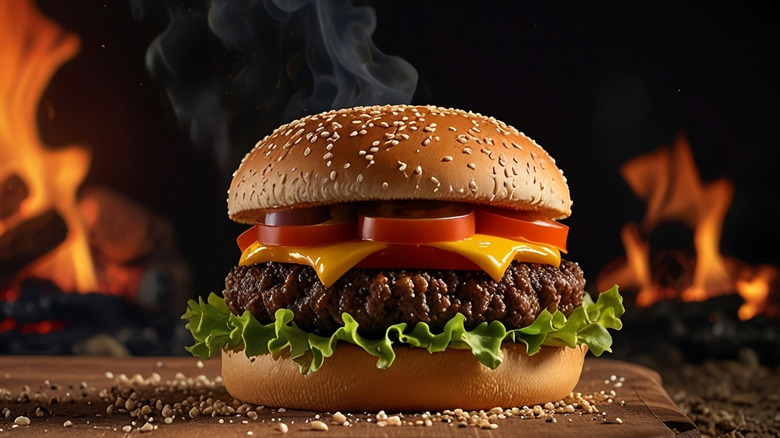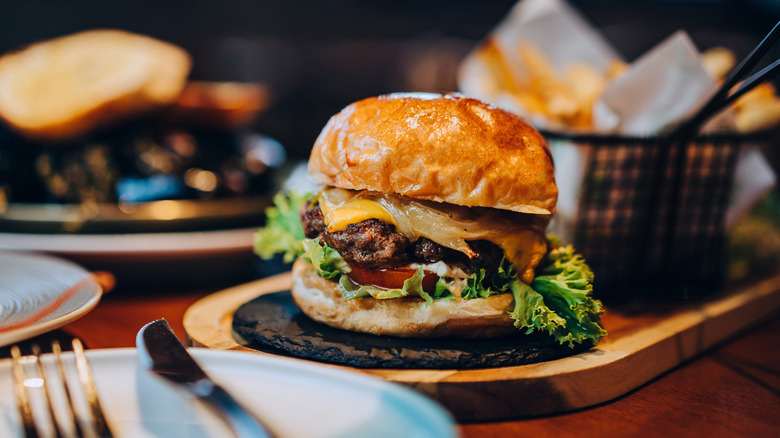The Lettuce Rule You Should Always Know For Burgers
One of the benefits of cooking your own burgers is that you can get as creative as you want with the toppings. Even so, there are a few tried-and-true accompaniments that appear at almost every restaurant and backyard barbecue to pair with that juicy patty, and lettuce is one of those mainstays. It adds color and crunch to the burger, but it also plays a much subtler yet no less important role in the sandwich's presentation: It acts as a barrier between the patty and the burger bun.
Next time you're adorning your patty, place some lettuce at the very bottom and top of the burger stack. It should be the topping closest to the bun because the leafy vegetable prevents the meat's juices from being absorbed by the bread. Once that beefy elixir makes contact with the bun, it can quickly become soggy and fall apart. This is especially true if you have a high-fat patty, which will naturally be juicier.
The right lettuce for preventing soggy buns
For particularly juicy burgers, use sturdy iceberg lettuce to prevent the absorption of juice while also giving the sandwich a nice crunch. Romaine and butter lettuce will work well, too, but keep in mind that while butter lettuce may fold onto the bun well, it lacks the robust crispness of iceberg and romaine.
Beyond lettuce, there are a handful of ways to ensure your burger remains easy to eat. Instead of topping the patty with a slice of cheese, melt a slice of cheese, such as American or cheddar, over the inside of each bun. In addition to the lettuce, the cheese will act as a moisture-resistant coating to prevent the burger's juices from soaking into the bun. Keep drier toppings as close to the top and bottom buns as possible, leaving the ones with higher water content, such as tomato slices, near the center.
If you have the extra time, toast the buns, too. Browning them in butter or mayo makes them crisp enough to withstand a little extra moisture. Even after following all of these methods, it's best to eat assembled burgers as soon as they're done. The longer you let them sit, the greater the chance that those juices will eventually make their way to the bun.

